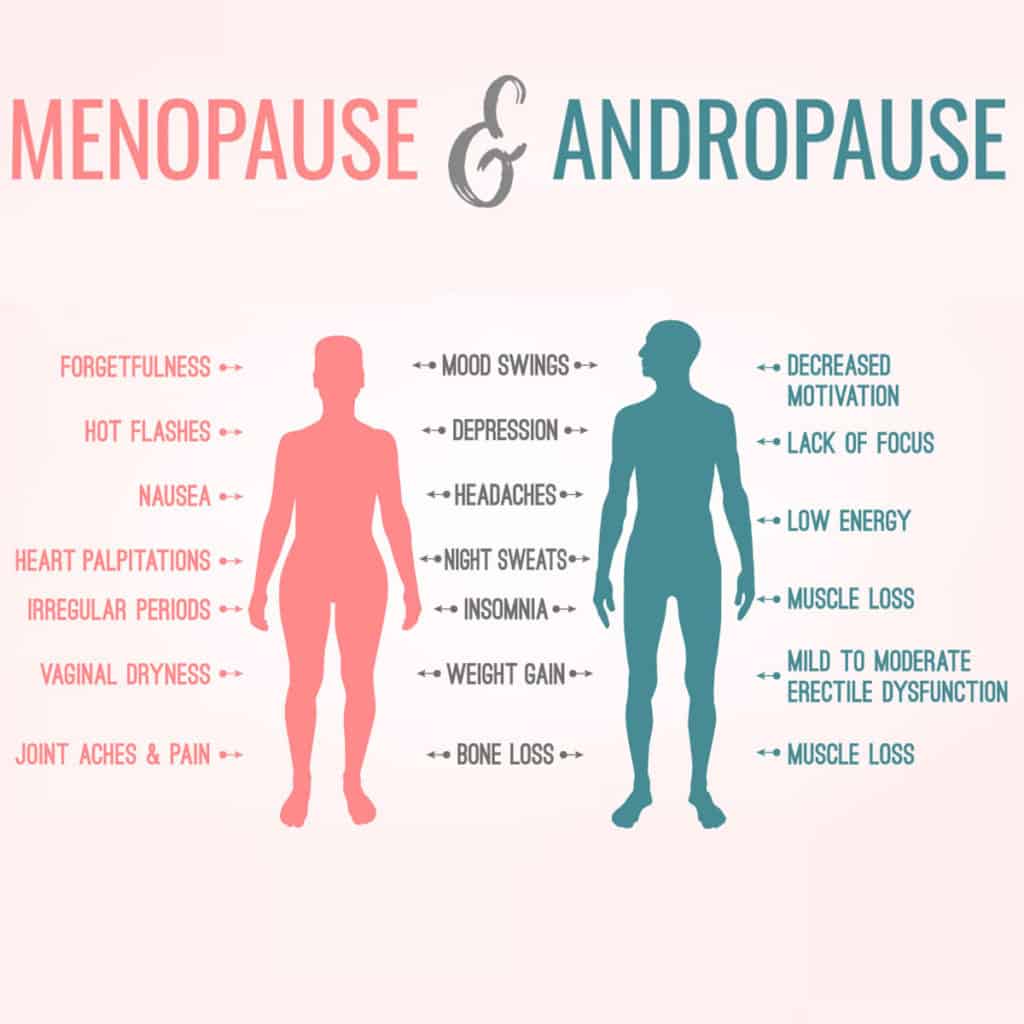Mid-Life And Menopause In Humans
▶Mid-life
Mid-life spans the years between puberty and old age (senescence). In men, maximum secretion of testosterone occurs between 18 and 20 years of age; muscular strength peaks at about 25 years of age. Changes are seen during different decades of life, although these vary from person to person.
Teens
Thymus involution occurs at about 12 years of age.
Twenties
Height may start to decrease due to a withdrawal of protein from the intervertebral disks.
Thirties
Women reach their sexual peak; heart muscles start to thicken; the skin loses some elasticity (collagen cross-linking) leading to wrinkles; melanin loss in hair leads to graying; further loss of protein from intervertebral disks occurs; loss of some hearing in the high-frequency range takes place.
Forties
Hunching of the back is seen: further loss of protein from intervertebral disks may mean that a 40-year-old man is about 4 mm shorter than he was at 20; there is a tendency to deposit fat (an average man is 4.5–9.0 kg heavier than he was in his twenties); there is a loss of scalp hair; and presbyopia is common.
Fifties
Menopause occurs in women (see below); late-onset diabetes and other autoimmune conditions are more common; the skin continues to loosen and wrinkle; hearing and chemoreception (taste and smell) decline; muscle deterioration and weight loss are common (although this may be more than compensated for by fat deposition as metabolism slows and less exercise is taken); semen volume decreases (although viable spermatozoa are produced into old age); men’s voices may acquire a higher pitch due to stiffening of the vocal cords. These changes continue into the sixties and beyond.
▶Menopause
Women between 45 and 55 usually stop producing and releasing eggs and the monthly menstrual cycle (often after some irregularity of timing) ceases. This cessation of menstruation is the menopause, and failure of the ovaries to function cyclically is the climacteric: it signals the end of reproductive ability in women. In Western societies, the average age for the menopause is 52 years, and is increasing. Ovarian failure results in low estrogens and hence raised levels of FSH and LH. The fall in estradiol production leads to atrophy of the breasts and the vaginal mucosae. Other changes include a decline in bone mass (sometimes leading to osteoporosis associated with reduced estradiol). ‘Hot flushes’ in the skin are caused by changes in the vasomotor system controlling cutaneous vasodilation. Dizziness, fatigue, headaches, chest and neck pains and insomnia are common. As estrogen levels fall (and blood cholesterol rises), the incidence of cardiovascular disease in women rises to equal that of men. Psychological disturbances (e.g. depression) may accompany the physical changes. After the menopause, estrogen production is solely dependent on conversions of adrenal steroids.
Hormone replacement therapy (HRT) can be used to ameliorate the effects of the menopause, although estrogen alone can result in endometrial hyperplasia and increase the risks of uterine cancers. Progesterone is given too: this reduces the numbers of estrogen receptors and increases the catabolism of estradiol. HRT is usually given intermittently and produces withdrawal bleeding from the uterus. There is no evidence of a biologically based menopause-equivalent in men.

